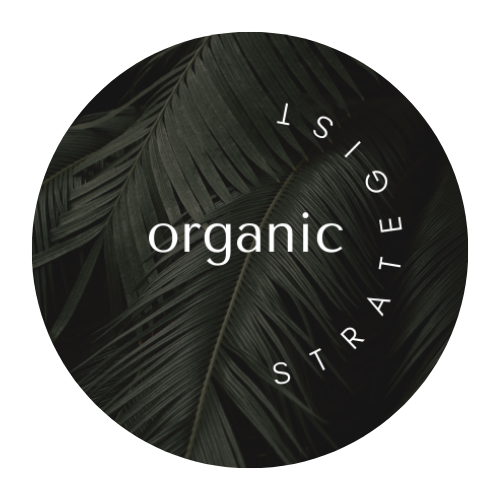5 Marketing Channels That Can Outperform Social Media (with Real Statistics)
As a marketing professional who’s worked with numerous clients and spoken with many business owner friends, I’ve noticed a recurring frustration: despite achieving high reach and engagement on social media, the conversions just aren’t following suit. Business owners feel pressured to prioritize social media because it’s the channel most experts, news sources, and industry leaders seem to emphasize. Every day, we’re inundated with messages about how “essential” it is to focus on building a social media presence, as though it’s the only path to growth. But is social media really the best way to drive sales, or is it just one piece of a much larger puzzle?Curious about where the truth lies, I decided to dig into the data. What I found was both surprising and enlightening: while social media certainly has value, other marketing channels often outperform it in terms of conversion rates, customer retention, and return on investment. Channels like email marketing, SEO, and content marketing tend to generate more substantial, lasting results, helping businesses reach their goals more effectively and with greater consistency.Below, I’ll dive into five organic marketing channels that frequently deliver better outcomes than social media alone. With the support of real-world statistics, these insights reveal why expanding your marketing strategy beyond social media could be the key to achieving sustainable growth and measurable success.1. Email Marketing: The Power of Direct Connection
Email marketing continues to be a top-performing channel for businesses, often surpassing the ROI of social media. In 2023, email marketing had an average ROI of $36 for every $1 spent, compared to generally lower returns seen from social media ads.
Why Email Marketing Works:
High ROI: Studies show email marketing generates a high ROI, with an average of 4200%, making it 40 times more effective at acquiring customers than social media.
Targeted Campaigns: Segmented email campaigns drive 760% higher revenue than non-segmented ones.
Automation & Personalization: Personalized emails improve engagement for 80% of marketers, helping nurture relationships over time.
Who benefits?
E-commerce businesses: Cart abandonment emails achieve 45% open rates, recovering $17.90 per email.
SaaS companies: Email marketing is responsible for 18% of SaaS customer acquisition.
B2B brands: 86% of B2B marketers use email as their primary lead generation tool.
2. Search Engine Optimization (SEO): Long-Term Traffic Growth
SEO is one of the most reliable and cost-effective channels to attract traffic. 53% of all website traffic comes from organic search, and Google dominates this space.
Why SEO Works:
Organic Visibility: SEO leads have a 14.6% close rate, compared to 1.7% for outbound leads.
Credibility & Trust: Organic search generates 1,000% more traffic than social media.
Long-Term Results: SEO produces over 20 times more traffic opportunities than PPC on mobile and desktop.
Who Benefits?
E-commerce sites: SEO drives 37.5% of all e-commerce traffic.
Local businesses: 46% of Google searches are local, making local SEO vital for businesses with physical locations.
B2B services: On average, B2B buyers conduct 12 searches before engaging with a brand, giving SEO the edge in visibility.
3. Content Marketing: Building Authority and Trust
Content marketing is about educating and engaging your audience through blogs, webinars, podcasts, and more. It’s proven to drive more leads at a lower cost than traditional advertising. Content marketing costs 62% less but generates 3 times more leads than outbound marketing.
Why Content Marketing Works:
Brand Authority: 70% of consumers prefer learning about a company through articles rather than ads.
Lead Generation: Companies that blog regularly receive 67% more leads than those that don’t.
Conversion Rates: Content marketing produces 6 times higher conversion rates than other marketing methods.
Who Benefits?
B2B companies: 82% of B2B marketers actively use content marketing to engage their audiences.
Tech and SaaS companies: Long-form content like white papers and webinars help explain complex products and generate leads.
Health and education sectors: 74% of companies report improved lead quality through content marketing efforts.
4. Referral and Affiliate Marketing: Leveraging Word of Mouth
Referral and affiliate marketing use personal recommendations to drive sales. 92% of consumers trust recommendations from friends or family more than any other form of advertising.
Why Referral and Affiliate Marketing Work:
Trust: People are 4 times more likely to buy when referred by a friend.
Low Risk, High Reward: Affiliate marketing is responsible for 16% of all e-commerce sales, rivaling email marketing.
Extended Reach: Referred customers have a 25% higher lifetime value than those acquired through other methods.
Who Benefits?
E-commerce businesses: Referral programs can account for 10-30% of a company’s revenue.
SaaS or subscription models: Companies like Dropbox saw 60% growth in signups from referrals.
Startups: Referral programs lower acquisition costs by up to 3-5 times.
5. Partnerships and Collaborations: Expanding Reach Through Strategic Alliances
Collaborations and partnerships allow businesses to leverage each other’s audiences and expertise, resulting in greater brand exposure and credibility. These organic relationships can include co-branded products, joint webinars, or even content swaps.
Why Partnerships and collaborations Work:
Audience Expansion: By partnering with complementary brands, companies can introduce their product or service to a new, yet relevant audience. 88% of marketers view partnerships as key to expanding their business reach.
Brand Credibility: Collaborating with well-established brands enhances trust. 79% of consumers say they are more likely to trust a brand that partners with a company they already know and respect.
Cost Efficiency: Partnerships are often cost-efficient because both parties share resources, and the collaboration leads to organic, non-paid exposure.
Who Benefits:
Small businesses: Teaming up with larger, more established brands can rapidly increase exposure and credibility.
B2B brands: Joint ventures and content co-creation can help B2B companies build authority and trust in niche industries.
Nonprofits: Collaborating with corporate sponsors increases visibility and funding, while the businesses involved benefit from positive brand association.





